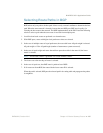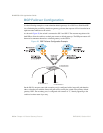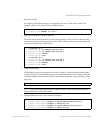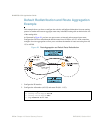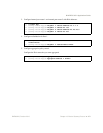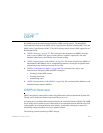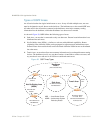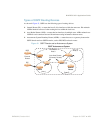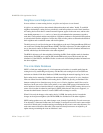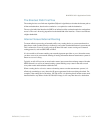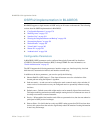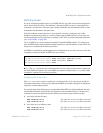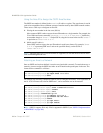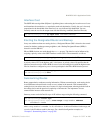
BLADEOS 6.5.2 Application Guide
274 Chapter 20: OSPF BMD00220, October 2010
Types of OSPF Areas
An AS can be broken into logical units known as areas. In any AS with multiple areas, one area
must be designated as area 0, known as the backbone. The backbone acts as the central OSPF area.
All other areas in the AS must be connected to the backbone. Areas inject summary routing
information into the backbone, which then distributes it to other areas as needed.
As shown in Figure 30, OSPF defines the following types of areas:
Stub Area—an area that is connected to only one other area. External route information is not
distributed into stub areas.
Not-So-Stubby-Area (NSSA)—similar to a stub area with additional capabilities. Routes
originating from within the NSSA can be propagated to adjacent transit and backbone areas.
External routes from outside the AS can be advertised within the NSSA but are not distributed
into other areas.
Transit Area—an area that allows area summary information to be exchanged between routing
devices. The backbone (area 0), any area that contains a virtual link to connect two areas, and
any area that is not a stub area or an NSSA are considered transit areas.
Figure 30 OSPF Area Types
Backbone
Area 0
Stub Area
Not-So-Stubby Area
(NSSA)
Transit Area
No External Routes
from Backbone
Stub Area, NSSA,
or Transit Area
Connected to Backbone
via Virtual Link
(Also a Transit Area)
External LSA
Routes
Internal LSA
Routes
ABR
ABR
ABR
ASBR
Non-OSPF Area
RIP/BGP AS
Virtual
Link
ABR
ABR = Area Border Router
ASBR = Autonomous System
Boundary Router




